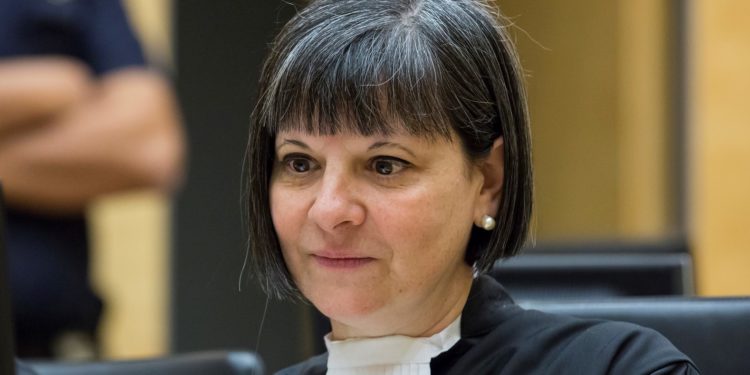By Paolina Massidda
The armed conflict between the Government of Uganda and the Lord’s Resistance Army (the LRA) in Northern Uganda – described as the worst forgotten humanitarian crisis in the world – was exceptionally protracted and brutal in its impact on the civilian population. After the LRA insurgency began, nearly 2 million northern Ugandans were forced to abandon their often self-sufficient homesteads for a life confined to internment camps, dependent on food assistance. A survey report released in July 2003 revealed that at least 1,000 people, mainly children, were dying in the camps every week. The high concentration of people in the IDP camps made the population more vulnerable and harder to protect from LRA incursions. The protection of the camps remained precarious, and life became a daily struggle for survival. The LRA frequently attacked the camps, partly because [Joseph] Kony perceived the victims as loyal to or supporting the government due to the fact that they were confined in areas under the protection of the [Uganda People’s Defence Force] UPDF, and partly because he needed to recruit soldiers and wives for his army.
The attacks were well-planned and well-executed following a standard modus operandi which aimed at targeting the UPDF on one side, and the civilians, on the other side. Victims of the attacks generally recall their experience as follows: “All around there were killings going on and so much fire burning, that the entire place became so bright as though it was broad daylight”. By the time they left, the whole camp was littered with dead bodies as if they had been on a hunting spree. They killed people as if they were hunting animals”. The broad geographical spread of the victimisation and the large number of victims participating in this case confirm the wide scope of the attack. Families and communities of all ages and genders suffered from crimes in Northern Uganda. The victims of the attacks’ account of events reveals that the crimes they suffered from were not spontaneous nor isolated acts of violence, but were rather part of a planned, directed and organised attack against them, because they are Acholi and perceived as supporting [Yoweri] Museveni’s government. The attack was perpetrated over a long period of time. The victims recall a particular pattern of the LRA in attacking IDP camps and put emphasis on the crime of pillaging, explaining that the LRA took everything they owned, including all goods necessary to sustain life in the difficult conditions in Northern Uganda, pans, cups and clothes, as well as livestock, representing the key source of income of the affected people. Often, victims had compiled detailed lists of the items looted. According to the victims’ account of events some murders were motivated by the desire to oppress the resistance, or by the desire to appropriate cattle belonging to the inhabitants of the camps. After completing their operations, usually the rebels departed, taking with them an unspecified number of men, women, children, food stuffs and other valuables. An estimated 30,000 children, mainly from the Acholi sub-region, have been abducted and conscripted as child soldiers and rebel ‘wives’. During the decades of armed conflict in Northern Uganda, the LRA systematically abducted girls for the purpose of forcibly marrying them to commanders and fighters. Abductions were normally perpetrated during the attacks. The majority of abducted girls forced into marriage were given to LRA commanders and higher ranking fighters. Top commanders would describe the type of girl they wanted, including age, physical appearance, and intelligence. If recent abductees matched these desired characteristics then, they were collected and distributed to the commanders. It was an order to then go to those men and become their wives, and resistance was punishable by rape, severe beating, torture or even death. Once the senior commanders selected the girls they wanted, the lower-ranking fighters would be given a wife from those that remained. The use of the label ‘wife’ – the forced imposition of the status of marriage – causes a unique psychological suffering which often leads to stigmatization and rejection of the victims by their families and community. Forced marriage also inflicts grave physical injury and results in long-term moral and psychological suffering of the victims.
Victims indicate that their condition of ‘wife’ had and still has serious repercussions on their possibility of restoring a ‘normal’ relationship with men and that even if they are re-integrated in the community, they feel that said reintegration is not – to use their word — ‘full’ and sometimes only dictated by social conventions more than by a genuine will to help them in rebuilding their lives. All victims recall their experience as ‘wife’ as distinct from the ones suffered from as a result of other gender-based crimes. The LRA’s method of warfare has had a profound psychological impact on the local population. LRA rebels used extreme violence to instil fear and maintain control. The severity of attacks appeared to come in waves, with major massacres interspersed across an ongoing campaign of low-intensity, small-scale assaults. LRA rebels mutilated, abducted children and adults, and committed rape and other acts of sexual violence against girls and women. The LRA routinely cut off lips, ears, and breasts; and amputated limbs. Many of these mutilations were carried out to prevent “betrayals.” Adults were abducted to help carry looted goods, but usually released after a short period of time. Children had a different fate. The LRA favoured the abduction of very young children because [they are] more malleable. Once abducted, children were conscripted as soldiers, porters, and sexual slaves. Children were often forced to commit atrocities as soon as they were abducted in order to “make a clean break”. The porters were used mainly to carry stolen loot and have been characterized as “disposable.” These children were considered an asset to the LRA because they can walk quickly and do not tire easily. If they slow down, or are unable to keep up, they were killed, or mutilated and then killed. The LRA favoured also the abduction of preadolescent girls because [they were] believed to be free of sexually transmitted diseases. The younger girls were subjected to long hours of exhausting domestic work: walking long distances to fetch water and firewood, cooking, cleaning and working in the fields. The horrific and prolonged consequences of the war had an impact not only on the individuals, but eroded the solid and rich culture of the Acholi society.
The extent of the prejudice suffered from by the civilians in Northern Uganda is tremendous. Experience of forced conscription into the LRA varies in scope and intensity but is considered to be extremely traumatic. Children and youth – some as young as six years old – have been forced to mutilate and kill civilians, including members of their own families and communities. LRA abductees have had severe violence inflicted upon them – typically beatings, imprisonment, forced labour, and witnessing killings. Several studies indicate that former abductees who have committed or experienced high levels of violence show “substantial increases in emotional distress, as well as poorer family relations.” Symptoms of Post-Traumatic Stress Disorder and depression were found to be significantly higher among those who experienced abduction compared to those who only witnessed violence and those who had little exposure to the conflict. Formerly abducted male youth were found to achieve lower education levels not simply because of the time away from school and the difficulty of returning to school as a young adult, but also because of the impact of abduction on the resources available for paying fees. Reports also show that women experienced a longer average stay in captivity than men. Women aged 19-30 years old averaged 4.5 years in abduction, more than the average of any other gender-age group. This finding reflects the LRA practice of abducting girls and women to serve as sexual partners and servants to LRA commanders. Recent studies find that a quarter of all females abducted for any length of time were forcibly married to members of the LRA, and that half of them gave birth to children, conceived following these forced relationships. As the people from the IDPs camps returned from displacement and tried to rebuild their lives, they had to struggle with daunting resettlement challenges in addition to complex questions on how to approach issues of reconciliation between victims and alleged perpetrators within the community. Many war affected communities in northern Uganda are faced with a similar scenario as they struggle to pick up the pieces of their lives in the wake of the conflict, characterized by difficulty to cope with their trauma, and challenges in the pursuit of their justice and reconciliation needs, specifically the need for accountability and reparations.
Paolina Massidda is the Principal Counsel, Office of the Public Counsel for Victims at the International Criminal Court. This commentary is excerpted from her remarks at the opening of the trial of Dominic Ongwen







